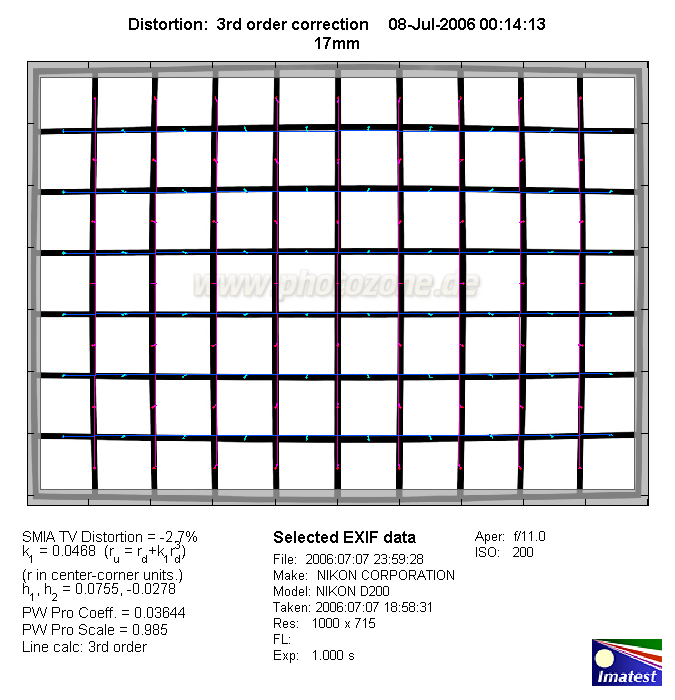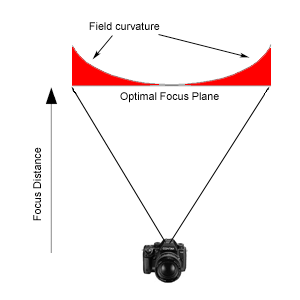|
Tamron AF 17-50mm f/2.8 SP XR Di II LD Aspherical [IF] (Nikon) - Review / Test Report - Analysis |
|
Lens Reviews -
Nikon / Nikkor (APS-C)
|
|
Page 2 of 3

Distortion
The AF 17-50mm f/2.8 SP XR exhibited average distortion figures for a lens in this class. As expected there is pronounced barrel distortion (2.7%) at 17mm which evens out around the 24mm setting. Beyond the images show a moderate degree of pincushion distortion (0.9% @ 50mm).
|
Move the mouse cursor over the focal length text marks below to observe the respective distortion
|
| 17mm |
24mm |
35mm |
50mm |
|

|
The chart above has a real-world size of about 120x80cm.
Vignetting
As mentioned above the AF 17-50mm f/2.8 SP XR is a dedicated DX lens and these lenses tend to show fairly high vignetting figures at their max. aperture setting. At f/2.8 the lens shows quite pronounced light fall-off towards the image corners of ~1.2EV at 17mm and ~1EV at 50mm. Stopping down helps to reduce the problem.

MTF (resolution)
The Tamron 17-50mm f/2.8 produced pretty impressive performance figures in the MTF lab. The center resolution is generally very good to excellent, the borders and corners follow only a bit behind with good to very good resolution, even reaching excellent sharpness stopped down towards the longer end of the focal range.
Unfortunately the lens has a less than desirable characteristic - at 17mm it suffers from very strong field curvature which can render the outer corners out-of-focus.

Please note that the MTF results are not directly comparable across the different systems!
Below is a simplified summary of the formal findings. The chart shows line widths per picture height (LW/PH) which can be taken as a measure for sharpness.
If you want to know more about the MTF50 figures you may check out the corresponding Imatest Explanations

Chromatic Aberrations (CAs)
Chromatic aberrations (color shadows at harsh contrast transitions) are high towards the wide-end of the zoom range especially at large aperture settings with a peak of almost 2.2px on the average at the image borders at 17mm. Stopping down reduces the issue but you will need to stop down to f/8 in order to suppress the problem to an uncritical level at 17mm. CAs are a lesser problem towards the long end of the zoom range.
However, please note that CAs can easily be corrected in software or by the camera itself (most modern Nikon DSLRs remove CAs themselves if you shoot JPGs).

|